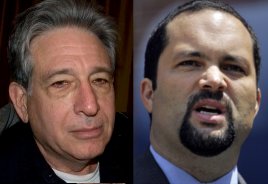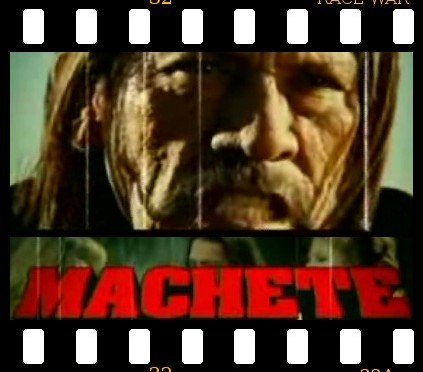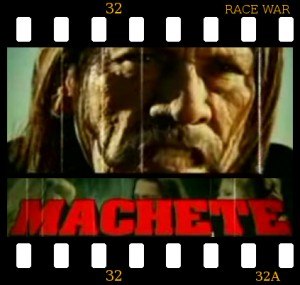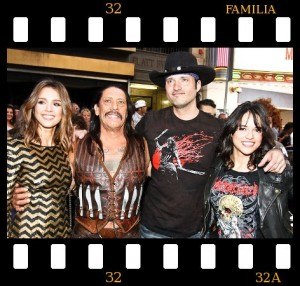 Media reports on the Tom Burlington case have glossed over interesting points. As it turns out, the recent court ruling those reports were based on contains an informative summary of the events and the current legal thinking on race-based social and workplace standards. The picture it paints is one that will shock and surprise anyone who believes the premise or goal of “civil rights”, “affirmative action”, or “anti-discrimination” is racial equality under law or anywhere else.
Media reports on the Tom Burlington case have glossed over interesting points. As it turns out, the recent court ruling those reports were based on contains an informative summary of the events and the current legal thinking on race-based social and workplace standards. The picture it paints is one that will shock and surprise anyone who believes the premise or goal of “civil rights”, “affirmative action”, or “anti-discrimination” is racial equality under law or anywhere else.
To make this ruling more readable I’ve excerpted the court’s PDF below, preserving the bulk of it while omitting many of the parenthesized, superfluous citations to Burlington’s original complaint, and the subsequent motions and depositions, as well as the bulk of the references to specific case law.
I am White. I am not a lawyer.
I. BACKGROUND
On May 4, 2009, Plaintiff Thomas Burlington filed suit against Defendants News Corporation, Fox Television Stations, Inc., and Fox Television Stations of Philadelphia, Inc. alleging violations of Title VII of the Civil Rights Act of 1964, 42 U.S.C. § 2000a et seq., 28 U.S.C. § 1981, and the Pennsylvania Human Relations Act (“PHRA”), 43 Pa. Cons. Stat. § 951 et seq. Plaintiff is a white male. He alleges that he was discriminated against because of his race, was subjected to a hostile work environment, and that Defendants retaliated against him. Defendant News Corporation was dismissed from this litigation by stipulation of the parties. The remaining defendants are Fox Television Stations, Inc., and Fox Television Stations of Philadelphia, Inc. (collectively “the Station,” “Fox,” or “Defendants”).
Plaintiff was hired by Defendants as a reporter in December 2004. Plaintiff received a B.S. in Journalism from the University of Colorado in 1984 and an M.A. from Wake Forest University in 1994. He had 17 years of experience as a reporter or anchor when he was hired by Defendants. Plaintiff has won several awards for his reporting, including the Edward R. Murrow Award. His written evaluations while an employee at the Station rate him as a “Solid Performer.” Plaintiff was promoted to weekend anchor/reporter on February 20, 2006. Joyce Evans, an African American female, was Plaintiff’s weekend co-anchor.
The Station regularly held newsroom editorial meetings in which its journalists discussed the stories that would air on that evening’s news broadcast. Plaintiff claims that he suffered reverse discrimination as a result of a comment that he made at a newsroom editorial meeting on June 23, 2007. Plaintiff attended the June 23rd newsroom editorial meeting along with eight of his coworkers. The individuals who attended the meeting and their races are as follows:
• Plaintiff—White
• Christopher Denton—White
• Cynthia Cappello—White
• Charles Edmondson—White
• John Jervay—African American
• Rebecca Rogers—White
• Tor Smith—African America
• Robin Taylor—White
• Nicole Wolfe—African American
During the June 23rd meeting, the group discussed a story about the Philadelphia Youth Council of the NAACP holding a symbolic burial for the word “nigger.” Robin Taylor had been assigned to the story. Taylor had attended the symbolic burial and testified that the participants at the burial used the word “at least a hundred times or more” during the course of the proceedings. Taylor discussed the story with her colleagues at the editorial meeting and consistently referred to the racial slur as “the n-word” instead of using the full word. During the meeting Plaintiff asked, “Does this mean we can finally say the word ‘nigger?’” Taylor said that she would not say the word in her story. Plaintiff told Taylor that although he did not necessarily expect her to use the word in her story, he thought that doing so gave the story more credence. At his deposition Plaintiff testified that he “wanted to make the point that I felt if we’re going to refer to the word ‘nigger,’ we should either say the word ‘nigger’ or refer to it as a racial epithet or a slur instead of using the phrase the ‘N’ word.” Plaintiff used the word once during the newsroom meeting. Nicole Wolfe exclaimed in response to Plaintiff’s use of the word, “I can’t believe you just said that!” Neither Plaintiff nor Taylor recalls anyone else saying anything on this subject during the meeting.
After the discussion about whether to use the word, the meeting proceeded as normal, though Plaintiff noticed that his comments had elicited a negative reaction from Nicole Wolfe. Wolfe later told Taylor that she was offended by Plaintiff’s use of the racial slur during the meeting. Nobody at the meeting believed that Plaintiff used the word in its pejorative sense as a racial slur. Taylor later told the head of human resources, Ameena Ali, that she thought more was being made of the situation than should be, and that Plaintiff had not acted maliciously in making his statements during the meeting.
After the meeting, Plaintiff approached Wolfe and said that he had sensed that she was upset and “wanted to explain.” Wolfe said that she did not want to discuss the meeting. Soon thereafter, Plaintiff was confronted by his co-anchor, Joyce Evans, who was not present at the meeting but had been approached by several meeting attendees who had been offended by Plaintiff’s remarks. Evans is African American. Evans informed Plaintiff that he had upset his coworkers, and Plaintiff decided to talk to each of the attendees individually. Plaintiff spoke to John Jervay and explained his rationale for using the word during the meeting. Jervay perceived this to be “some form of an apology.” During the conversation with Jervay, Plaintiff again used the word once or twice. Plaintiff had similar conversations with Christopher Denton, Cynthia Cappello, Charles Edmondson, and Tor Smith. As with Jervay, Plaintiff used the word in several (though not all) of these conversations. After he explained himself and apologized to his coworkers, Plaintiff again spoke to Evans. Plaintiff testified that during this conversation, “Joyce said, [b]ecause you’re white you can never understand what it’s like to be called a nigger and that you cannot use the word ‘nigger.’” Evans denies telling Plaintiff that he could not say the word because he was white, and she also denies ever saying the word during her conversation with Plaintiff. Plaintiff testified that Evans used the word twice in their conversation. Plaintiff told Evans that he was surprised at her position, because he did not believe that a journalist was not allowed to say certain words in an editorial context. [Footnote 1: Ameena Ali, the head of Defendants’HR department, testified in her deposition that Evans’s statement that white people could not say the word would be a violation of Defendants’EEO policies.]
The conversation ended with Evans and Plaintiff in full disagreement. Thereafter, Plaintiff overheard Evans telling another employee that “people get fired for using that word.” Plaintiff testified that at that point, he realized that “she was not letting this go.” On Sunday, June 24, Evans called the Assistant News Director, Leslie Tyler, at home to tell her about Plaintiff’s actions at the previous day’s newsroom editorial meeting. Tyler is African American. Evans told Tyler that employees were upset over what Plaintiff had said during the meeting. Evans felt that Tyler should know what had happened in the meeting and how people reacted to it. Tyler called several employees that day to find out what had happened in the meeting. Tyler testified that she believes that she called Nicole Wolfe, John Jervay, Tor Smith, Becky Rogers and Robin Taylor. Plaintiff contends based on Taylor’s and Rogers’s deposition testimony that Tyler only called the African American employees who were present at the meeting. [Footnote 2: Becky Rogers stated in her deposition that she first spoke to Tyler about the incident in Tyler’s office later in the week—not on the phone on Sunday, June 24, as Tyler testified. Similarly, Robin Taylor testified that she did not talk to anyone about the incident until “days later. Probably a week later.” This contradicts Tyler’s testimony that she called Taylor on Sunday, June 24. We must not resolve factual issues, but we must view the facts and the inferences in the light most favorable to the Plaintiff. Anderson v. Liberty Lobby, Inc., 477 U.S. 242, 247 (1986).] Defendants dispute this, pointing out that Tyler and/or Ali eventually spoke to Christopher Denton, who is white, and several other white employees who attended the meeting. In any event, the record shows that on Sunday, June 24, 2007, Tyler called all the African American employees who had been present at the meeting but had not called the majority of the white attendees, including Plaintiff himself.
On Monday, June 25, Tyler spoke to the News Director at the Station, Philip Metlin, about the June 23 meeting and its aftermath. Metlin is a white male. Tyler had intended to inform Ameena Ali about the situation, but Metlin told Tyler not to contact Ali or to do anything else at that juncture. Over the following few days, Tyler received emails from several of the people whom she had called the previous Sunday. Tor Smith sent an email to Tyler and Metlin on Wednesday, June 27. Joyce Evans had recommended that Smith speak to Tyler about his discomfort with Plaintiff’s comments. Tyler in turn recommended that Smith detail his complaint about Plaintiff in an email to Tyler and Metlin. Smith’s email details his version of Plaintiff’s remarks during and after the June 23 meeting. Nicole Wolfe also wrote an email to Metlin and Tyler, as did Becky Rogers. In addition, John Jervay sent an email describing Plaintiff’s actions to Metlin and Tyler. Jervay’s email explicitly uses the word “nigger” three times, twice in all capital letters.
Becky Rogers wrote her email to Metlin and Tyler after a conversation with Joyce Evans in which Evans asked Rogers how she felt about Plaintiff’s behavior at the meeting. Rogers said that she was “horrified.” Evans said that it was important that Rogers let management know how she felt because “[t]he only people who have complained so far have been black people.” Rogers said that she would think about it.
At this point, Metlin brought the issue to Mike Renda, the General Manager of the station. Renda is a white male. Renda ordered Ameena Ali to conduct an investigation into Plaintiff’s actions. As part of that investigation, Ali asked Plaintiff to participate in a meeting with her, Metlin, and Renda on June 29, 2007. During the meeting, Metlin asked Plaintiff to give his version of the events at the editorial meeting the previous Saturday. Plaintiff recited what he had said in the editorial meeting, using the word in the process. Ali responded, “Tom, you’re still saying the word, why are you doing that?” (“Ms. Ali cut me off and said, ‘I can’t believe you said it again. . . . Don’t you know you can’t use that word?’”). Plaintiff replied that he was simply relating what had happened at the editorial meeting, as Metlin had requested. Ali testified that she found Plaintiff’s use of the word during the meeting offensive. Metlin, who is Jewish, explained to Plaintiff that his use of the word was akin to calling someone a “kike.” Metlin told Plaintiff that he would be suspended pending an investigation, and the meeting ended abruptly. The entire meeting lasted about five minutes. Plaintiff did not have an opportunity to give his version of the events that occurred after the editorial meeting, including his apologies to coworkers.
Plaintiff was never asked to explain his side of the story during the subsequent investigation. Plaintiff emailed Metlin on June 30 requesting an “opportunity to allow you to assess my sincerity by speaking with you face-to-face so you can hear what is in my head and in my heart.” Plaintiff never received a response from Metlin. As part of the investigation, Ali spoke to Cyndi Cappello, Nicole Wolfe, and Robin Taylor. [Footnote 3: Ali’s testimony that she spoke with Robin Taylor as part of her investigation is in conflict with Taylor’s testimony that Ali did not speak to her.] Ali did not speak to Plaintiff during the course of the investigation. Nor did Ali inquire as to whether the employees who had attended the June 23rd editorial meeting had reacted to Plaintiff’s comments the way they did because of Plaintiff’s race.
The investigation concluded on July 3, 2007. Plaintiff was issued a memorandum entitled “Final Warning and Employee Assistance Program Referral.” The memorandum briefly described the events that had led to Plaintiff’s suspension and informed Plaintiff that “[y]our behavior was unacceptable and will not be tolerated. You will not be warned again. Further failure to meet the job performance standards of your position will result in the immediate termination of your employment.” It referred Plaintiff to sensitivity training and stated that Plaintiff’s failure to contact the Employee Assistance Program (“EAP”) to schedule the sensitivity training, or to follow its recommendations, would be interpreted as a refusal to cooperate. According to Plaintiff, Mike Renda told Plaintiff at about this time that they were “going to ride this one out,” and that Plaintiff would be reinstated if he complied with the EAP’s requirements. Phil Metlin testified that at this point Defendants had most likely not yet decided to terminate Plaintiff, as they would not have given a final warning to an employee whom they had decided to terminate.
On July 5, 2007, the Philadelphia Daily News published an article about Plaintiff’s suspension in which it stated that “FOX 29 anchor/reporter Tom Burlington has been suspended by the station following what sources describe as a ‘bizarre’ and ‘shocking’ sermon in which he insisted there’s nothing wrong with a word most commonly referred to as ‘the N-word.’” Dan Gross, Fox’s Tom Burlington suspended, Phila. Daily News, July 5, 2007. The article stated that Plaintiff had “used the word more than a dozen times as he argued that doing so was not such a big deal.” Plaintiff called the article “false and defamatory” and suggested that the source of the Daily News’s information was a coworker who wanted to end Plaintiff’s career. The Philadelphia Tribune picked up the story the following day, running a front-page article with Plaintiff’s picture. Larry Miller, Fox news anchor suspended—reports say journalist used the ‘n-word’, Phila. Trib., July 6, 2007, at 1A. The story was subsequently picked up by several other print and online media outlets.
The Daily News article attributes its information about the June 23 editorial meeting to Plaintiff’s colleagues at the Station. Phil Metlin acknowledged that leaking information about the editorial meeting would be a violation of the Station’s policies. Mike Renda testified that if he learned of a Station employee leaking this story to the press, the employee most likely would have been terminated. The Station did not conduct an investigation to determine whether one of its employees had leaked the story to the media.
The Station’s management began to receive requests from employees that they not be assigned to work with Plaintiff. Photographer Paxton Reese emailed Chief Photographer John Campbell with a request that he not be assigned to work with Plaintiff. Paxton Reese is African American. Mike Renda testified that other photographers requested that they not be assigned to work with Plaintiff because they were concerned for their safety if they appeared on the street with Plaintiff.
In the meantime, Plaintiff complied with the EAP’s requirements. On July 6, 2007, the EAP informed Ali that Plaintiff was fit to return to work. (See Pl.’s Resp. Ex. MM (stating that Plaintiff was “in compliance” and was fit to return to work, and that “[h]e feels very badly and is remorseful about what happened”).) Ali forwarded the email to Mike Renda. On July 9th, Renda replied to Ali’s email, stating, “[w]e need to talk about return scenario—news would like him to return Wed.”
Joyce Evans called Ameena Ali on July 10th to inform her that she was receiving phone calls from the National Association of Black Journalists (“NABJ”) and the Philadelphia Association of Black Journalists (“PABJ”) regarding Plaintiff’s behavior at the editorial meeting. Evans also told Ali that she was hearing a lot of comments from “people talking to [her] on the street” about Plaintiff’s use of the word during and after the editorial meeting. Evans testified that she received a lot of phone calls asking if she was okay, as well as a voicemail from the NABJ and a voicemail from the PABJ. Evans did not actually talk to anyone at the NABJ or the PABJ, and she could not provide the name of anyone who had spoken to her regarding Plaintiff’s behavior. Ali testified that she believed Evans had called her to ask for advice on how to respond to these inquiries. Evans also told Ali that she was concerned about her on-air chemistry with Plaintiff in light of Plaintiff’s actions. Ali testified that she did not believe that Evans was trying to prevent Plaintiff from returning to work. Upon viewing Ali’s notes from the phone call with Evans, which read, “Getting lots of calls / NABJ / PABJ / People on street / Was concerned about the chemistry if Tom comes back,” Phil Metlin agreed that there was a racial issue regarding Plaintiff’s comments. (“Q: As you read [Ali’s notes], is this document indicating to you that there’s a racial issue concerning Mr. Burlington’s comments? A: Yes.”)
On July 12, 2007, Mike Renda, Ameena Ali, and Phil Metlin met with Plaintiff and informed him that he would not be put back on the air, and that his contract would not be renewed when it expired. Renda testified that the Station could have fired Plaintiff for cause, stating that the adverse publicity resulting from Plaintiff’s behavior violated the clause in Plaintiff’s contract that prevented him from engaging in “any activity that may result in adverse publicity or notoriety for performer or company.” Nevertheless, Renda offered Plaintiff the opportunity to resign, believing it to be the right thing to do. Plaintiff told Renda, Metlin, and Ali that it would ruin his career if they terminated him, but Metlin assured Plaintiff that he would “come through this without any problems.” Renda explained that their concern for Plaintiff’s safety was the basis for his decision. Plaintiff was unable to elicit any further explanation. No one stated that Plaintiff’s race was the reason for his termination, and Plaintiff did not suggest as much during the meeting. Plaintiff never returned to work at the Station, though the Station paid Plaintiff through the end of his contract, which expired on February 19, 2008. Since his contract with Fox expired, Plaintiff has been unable to obtain a job as a journalist. He is currently working as a real-estate agent.
II. LEGAL STANDARD
A party is entitled to summary judgment when “the pleadings, the discovery and disclosure materials on file, and any affidavits show that there is no genuine issue as to any material fact and that the [party] is entitled to judgment as a matter of law.” Fed. R. Civ. P. 56(c)(2); see also Anderson v. Liberty Lobby, Inc., 477 U.S. 242, 247 (1986); Fed. Home Loan Mortg. Corp. v. Scottsdale Ins. Co., 316 F.3d 431, 443 (3d Cir. 2003). Where the nonmoving party bears the burden of proof at trial, the moving party may identify an absence of a genuine issue of material fact by showing the court that there is no evidence in the record supporting the nonmoving party’s case. Celotex Corp. v. Catrett, 477 U.S. 317, 322, 325 (1986); UPMC Health Sys. v. Metro. Life Ins. Co., 391 F.3d 497, 502 (3d Cir. 2004). If the moving party carries this initial burden, the nonmoving party must set forth specific facts showing that there is a genuine issue for trial. See Fed. R. Civ. P. 56(e)(2) (stating that “an opposing party may not rely merely on allegations or denials in its own pleading; rather, its response must . . . set out specific facts showing a genuine issue for trial”); see also Matsushita Elec. Indus. Co., Ltd. v. Zenith Radio Corp., 475 U.S. 574, 587 (1986) (noting that the nonmoving party “must do more than simply show that there is some metaphysical doubt as to the material facts”). The nonmoving party may not avoid summary judgment by relying on speculation or by rehashing the allegations in the pleadings. Ridgewood Bd. of Educ. v. N.E. for M.E., 172 F.3d 238, 252 (3d Cir. 1999). “Where the record taken as a whole could not lead a reasonable trier of fact to find for the non-moving party, there is no ‘genuine issue for trial.’” Matsushita, 475 U.S. at 587 (quoting First Nat’l Bank v. Cities Serv. Co., 391 U.S. 253, 289 (1968)). “We must construe the evidence in favor of the non-moving party, and summary judgment must be denied if there exists enough evidence ‘to enable a jury to reasonably find for the nonmovant on the issue.’” Brown v. J. Kaz, Inc., 581 F.3d 175, 179 (3d Cir. 2009) (quoting Giles v. Kearney, 571 F.3d 318, 322 (3d Cir. 2009)).
In plain English, this says that viewing the evidence in Burlington’s favor, as he must, the judge feels obliged to allow a jury to decide the case. Do not mistake this for sympathy with Burlington.
The section labeled “III. ANALYSIS” comprises the majority of the original document. Much of it is jargon, including lengthy quotes and citations to related case law. Here I have excerpted only the portions I consider most intelligible and informative to laymen.
To establish a prima facie case of discrimination, a plaintiff generally must demonstrate by a preponderance of the evidence that “(1) the plaintiff belongs to a protected class; (2) he/she was qualified for the position; (3) he/she was subject to an adverse employment action despite being qualified; and (4) . . . circumstances that raise an inference of discriminatory action . . . .” Warenecki v. City of Phila., No. 10-1450, 2010 WL 4344558, at *5 (E.D. Pa. Nov. 3, 2010) (citing Sarullo, 352 F.3d at 797) (ellipses in the original). However, where plaintiffs allege reverse discrimination, the analysis is changed somewhat. See Iadimarco v. Runyon, 190 F.3d 151, 158 (3d Cir. 1999) (noting that literal application of the first element of the prima facie case would preclude white plaintiffs from establishing a prima facie case). In reverse discrimination cases, “a non-minority plaintiff must show [that] (1) he or she was qualified for the position in question, (2) he or she suffered an adverse employment action, and (3) the evidence is adequate to create an inference that the adverse employment action was based on a trait protected by Title VII.” Warenecki, 2010 WL 4344558, at *5 (citing Mosca v. Cole, 384 F. Supp. 2d 757, 765 (D.N.J. 2005)).
The upshot of this is that Whites are not members of a “protected class” and thus do not qualify to sue for discrimination. A separate legal concept called “reverse discrimination” is applied to “non-minority” (i.e. White) plaintiffs. Title VII “anti-discrimination” law itself discriminates Whites from non-Whites, assigning Whites an inferior legal status, subjecting us to a different legal standard. The consequences of this are clear in the discussion that follows.
Defendants concede that Plaintiff was qualified for his position and that he suffered an adverse employment action. Defendants argue that Plaintiff fails to establish a prima facie case because he cannot identify any similarly situated persons outside his protected class who were treated more favorably, and because the circumstances surrounding Plaintiff’s termination do not support an inference of discrimination. Plaintiff counters that he is not required to show that similarly situated employees outside his protected class were treated more favorably, and that in any event, three African American employees who said or wrote the word “nigger” in the workplace were not disciplined in any way.
Note that by very consciously using the deferential neologism “African American” and placing the word at issue in quotes the court itself shows subtle signs of race-based discrimination.
Plaintiff points to three African American comparators who stated or wrote the word but were not disciplined by the Station: David Huddleston, John Jervay, and Joyce Evans. Plaintiff testified in his deposition that during a newsroom editorial meeting, his coworkers were discussing a “dumb criminal” story in which the criminal was African American. Huddleston, who is African American, commented, “Man, that’s one dumb nigger.” The meeting attendees all laughed. Plaintiff testified that Leslie Tyler, who is part of the management team, was at the meeting. Tyler does not recall Huddleston saying the word or hearing people talk about this alleged exchange. Huddleston was not disciplined by the Station for saying the word.
Defendants argue that Huddleston is not similarly situated to Plaintiff. Defendants point out that there was a different General Manager at the Station when Huddleston made his comments and argue that “where there are different decisionmakers, employees are not similarly situated.”
Burlington also pointed to Philip Metlin’s use of kike, but apparently didn’t insist that Metlin was a similarly situated comparator.
Defendants also argue that Huddleston’s comments did not incite complaints from his coworkers and negative publicity for the Station the way Plaintiff’s comments did, and Huddleston is therefore not an appropriate comparator for the purpose of establishing a prima facie case. This argument misses the point. Plaintiff contends that his coworkers’ reaction and the negative publicity that resulted were all the product of racial discrimination that ultimately influenced management. The point of a comparator analysis is that when two employees of different races who act in a similar manner are treated differently, it permits the inference that the race of the employees accounts for the difference.
The meaning of prima facie is important: “It is used in modern legal English to signify that on first examination, a matter appears to be self-evident from the facts. In common law jurisdictions, prima facie denotes evidence which – unless rebutted – would be sufficient to prove a particular proposition or fact.”
The primary self-evident fact about arguments concerning discrimination is that when a member of a “protected class” files suit they are presumed to be “protected”, and thus are qualified to make accusations of discrimination for which the threshold of self-evidence is relatively low. In contrast, it is self-evident that Whites are not “protected”, and thus the threshold of self-evidence for anything we claim is higher. Even if we can adequately demonstrate our claims, they will only ever constitute a qualified, and thereby diminished reverse echo of anything “protected classes” are to be protected from.
Following the June 23rd newsroom editorial meeting, John Jervay, an African American, wrote an email to Phil Metlin and Leslie Tyler explaining that “during the news meeting the word nigger was used by Tom Burlington.” Jervay’s email used the word twice more in all capital letters. Defendants argue that Jervay simply “accurately reported and described Plaintiff’s offensive use of the word,” so his use of the word was therefore not as serious as Plaintiff’s. But when Plaintiff was asked during the June 29th meeting to explain what had happened in the June 23rd newsroom editorial meeting, Plaintiff’s use of the word provoked an immediate reaction from Ameena Ali and Phil Metlin. Plaintiff testified that Ali said, “I can’t believe you said it again. . . . Don’t you know you can’t use that word?” Mirroring Defendants’explanation of Jervay’s use of the word, Plaintiff replied that he was simply relating what had happened at the editorial meeting, as Metlin had requested. Metlin suspended Plaintiff, although Plaintiff’s suspension had been ordered by Mike Renda before the meeting. Jervay, by contrast, was never disciplined for using the word under almost the same circumstances as Plaintiff during the June 29th meeting. General Manager Mike Renda’s explanation of this inconsistency was as follows:
Q. And in this email [Jervay] uses the word—the full word nigger three times?
A. Correct.
Q. And is that a violation of Fox policy for him to have done it?
A. He was quoting Tom Burlington in an investigation.
Q. So that it was acceptable for him to do that?
A. We asked him what was said.
Q. And he—my question is: Was it a violation of Fox policy for him to use the word?
A. Not in the context of this investigation.
Q. Earlier I was talking to you about when Ameena Ali questioned Tom Burlington about what he said in the meeting and Tom Burlington used the full word nigger when he recounted what happened, and you said that would be a violation of policy. [. . .]
Q. Let me ask you again. Would it be a violation of policy for Tom
Burlington to have used the full word with Ameena Ali when he was asked about the incident? [. . .]
A. It was inappropriate.
Q. My question is—
A. No.
Q. Okay.
A. Well, wait a second. Let me take that back. The fact is that any time you use the word, it is a violation.
Q. Okay. So then looking at this email, was it a violation for John Jervay to type this word, send it in an e-mail and use it three times?
A. I will repeat what I said. No. He was asked to send this as part of the investigation.
Q. Well, you just said that any time that the word is used, it’s a violation of policy. So that’s not true?
A. I stand by what I said.
Q. Well, it doesn’t make sense. Is it always a violation of policy or are there exceptions?
A. We asked John Jervay what happened, and he reported to us.
Q. My question is different. Is it always a violation of policy or are there exceptions? [. . .]
A. I don’t know.
A reasonable jury could conclude that Renda’s testimony demonstrates that Defendants were unable to draw a principled, non-race-based distinction between Jervay’s use of the word in describing what happened at the newsroom editorial meeting and Plaintiff’s use of the word when he was asked to describe what had happened at the meeting. Plaintiff’s use of the word elicited a severely negative reaction, brought the meeting to a close before he could explain himself, and was followed by his immediate suspension, while Jervay’s use of the word elicited only Defendants’ defense of his actions. Plaintiff is white. Jervay is African American. Management’s inability to explain why Jervay was allowed to use the word while Plaintiff was not permits the inference that their races influenced the decision, and that a similarly situated African American employee was treated more favorably than Plaintiff under similar circumstances. [Footnote 4: We agree with Defendants that Joyce Evans is not a similarly situated employee. Plaintiff did not report her alleged use of the word to management until Plaintiff filed his EEOC charge, which was well after his termination.]
Given the Third Circuit’s repeated admonitions that “the plaintiff’s burden at this first stage is not particularly onerous,” Doe v. C.A.R.S. Protection Plus, Inc., 527 F.3d 358, 369 (3d Cir. 2008), we find that Plaintiff has satisfied his burden of establishing a prima facie case of discrimination.
Given such damning evidence of differing standards a reasonable judge operating on a premise of racial equality could easily have concluded that FOX is arguing in bad faith. Instead the premise of the law is inequality. Discrimination against non-Whites prior to Title VII has been replaced with discrimination against Whites.
(ii) Defendants’ legitimate, non-discriminatory reasons for Plaintiff’s termination
Defendants offer three legitimate, non-discriminatory reasons for Plaintiff’s termination: First, Defendants offer Plaintiff’s misconduct in using the word “nigger” at the editorial meeting and repeatedly thereafter as a legitimate, non-discriminatory reason. Next, Defendants offer the adverse impact that Plaintiff’s misconduct had in the workplace as a reason. Finally, Defendants offer the negative publicity and public embarrassment that Plaintiff’s conduct generated as a reason. Defendants contend that their action in suspending and terminating Plaintiff or in not renewing his contract had nothing to do with race. Rather, their action was a result of Plaintiff’s outrageous use of a word that was hurtful to his coworkers, caused a disruption in the newsroom, and caused the Station to be subjected to adverse publicity resulting in the Station and Plaintiff being brought into public contempt, ridicule, and disrepute. Defendants contend that this was in direct violation of the terms and conditions of Plaintiff’s employment agreement and justified the suspension and termination. Plaintiff argues that Defendants’ reasons themselves rely on impermissible racial considerations, because Plaintiff’s coworkers’ reactions to his statements and the negative publicity that they generated are based on the assumption that it is permissible for an African American to use the word, but not a white person. Plaintiff points out that he did not use the word in its pejorative sense; rather, he used it in an academic newsroom discussion of a news story involving the word and he had no intention of belittling or hurting anyone. Moreover, the adverse publicity that followed the newsroom discussion was the result of the discriminatory animus of his coworkers who leaked the story to the newspaper in violation of company policy and without any investigation or sanction. Assuming the existence of legitimate, nondiscriminatory reasons for Plaintiff’s termination, we must determine whether those reasons are simply a pretext for discrimination.
Based upon the totality of the evidence, we are compelled to conclude that a reasonable jury could find that an invidious discriminatory reason was more likely than not a motivating or determinative cause of Defendants’ action, or that the legitimate, nondiscriminatory reasons were not the real reasons for the termination. See id.
We begin by addressing an issue that does not appear to have been decided by the federal courts: can an employer be held liable under Title VII for enforcing or condoning the social norm that it is acceptable for African Americans to say “nigger” but not whites? The text of the statute is the starting point for our analysis. Lawrence v. City of Phila., 527 F.3d 299, 322 (3d Cir. 2008). Title VII makes it unlawful for an employer to “discharge any individual, or otherwise to discriminate against any individual . . . because of such individual’s race.” 42 U.S.C. § 2000e-2(a)(1). It is well settled that Title VII’s prohibition of race-based discrimination protects white employees as well as minority employees. McDonald v. Santa Fe Trail Transp. Co., 427 U.S. 273, 278-79 (1976) (stating that Title VII is “not limited to discrimination against members of any particular race”). As the law by its terms outlaws treating employees of one race differently from another race, the question becomes is there some justification for treating the white employee who says the word differently from the African American employee who says the word.
In Towne v. Eisner, 245 U.S. 418, 425 (1918), Justice Holmes observed that “[a] word is not a crystal, transparent and unchanged, it is the skin of a living thought and may vary greatly in color and content according to the circumstances and the time in which it is used.” This is certainly so with this particular word. Merriam-Webster notes in the usage section of its definition of the word that “[i]ts use by and among blacks is not always intended or taken as offensive, but . . . it is otherwise a word expressive of racial hatred and bigotry.” Merriam Webster’s Collegiate Dictionary 837 (11th ed. 2005); see also Randall Kennedy, Nigger: The Strange Career of a Troublesome Word 105-08 (First Vintage Books ed. 2003). Professor Kennedy, an African American, made the observation that
many people, white and black alike, disapprove of a white person saying “nigger” under virtually any circumstance. “When we call each other ‘nigger’ it means no harm,” [rapper] Ice Cube remarks. “But if a white person uses it, it’s something different, it’s a racist word.” Professor Michael Eric Dyson likewise asserts that whites must know and stayin their racial placewhen it comes to saying “nigger.” He writes that “most white folk attracted to black culture know better than to cross a line drawn in the sand of racial history. Niggerhas neverbeen cool when spit from white lips.”
Historically, African Americans’ use of the word has been ironic, satirical, or even affectionate. Too often, however, the word has been used by whites as a tool to belittle, oppress, or dehumanize African Americans. When viewed in its historical context, one can see how people in general, and African Americans in particular, might react differently when a white person uses the word than if an African American uses it.
Nevertheless, we are unable to conclude that this is a justifiable reason for permitting the Station to draw race-based distinctions between employees. It is no answer to say that we are interpreting Title VII in accord with prevailing social norms. Title VII was enacted to counter social norms that supported widespread discrimination against African Americans. See McDonnell Douglas, 411 U.S. at 800 (stating that the purpose of Title VII was “to eliminate those discriminatory practices and devices which have fostered racially stratified job environments to the disadvantage of minority citizens”). To conclude that the Station may act in accordance with the social norm that it is permissible for African Americans to use the word but not whites would require a determination that this is a “good” race-based social norm that justifies a departure from the text of Title VII. Neither the text of Title VII, the legislative history, nor the caselaw permits such a departure from Title VII’s command that employers refrain from “discriminat[ing] against any individual . . . because of such individual’s race.” 42 U.S.C. § 2000e-2(a)(1).
With the foregoing in mind, there is evidence in this case to suggest that at least two African Americans said the word in the workplace with no consequences. Dave Huddleston described the subject of a “dumb criminal” story as a “dumb nigger.” Like Plaintiff, Huddleston used the word in a newsroom editorial meeting. Unlike Plaintiff, Huddleston clearly used the word in its pejorative sense, rather than in a philosophical discussion of the word itself. Unlike Plaintiff, Huddleston’s coworkers simply laughed, and management was not notified. Similarly, John Jervay used the word in an email while describing what had transpired at the newsroom editorial meeting. When Plaintiff used the word for the same purpose in the June 29th meeting, it brought the meeting to an abrupt end, with Ameena Ali chastising Plaintiff and Phil Metlin suspending him. While Jervay obviously was not describing his own previous usage of the word as was Plaintiff during the June 29th meeting, Mike Renda’s deposition testimony attempting to explain why it was permissible for Jervay to say the word under those circumstances but not Plaintiff demonstrates that the General Manager of the Station was unable to reconcile this inconsistency.
In addition, Plaintiff has adduced facts about Joyce Evans’s role in Plaintiff’s suspension and termination that would permit a factfinder to infer that Plaintiff’s suspension and termination were motivated at least in part by his race. If Plaintiff is believed, upon learning of Plaintiff’s use of the word in the newsroom editorial meeting, Evans informed Plaintiff that he could not say the word because he was white—a statement that would have violated the Station’s EEO policies, according to the Station’s own human resources manager. Thereafter, Plaintiff overheard Evans telling another employee that “people get fired for using that word.” The next day, Evans called Leslie Tyler at home to inform her about Plaintiff’s use of the word in the previous day’s newsroom editorial meeting. Evans told Tyler that as the Assistant News Director, Tyler should know what had happened in the meeting and how people reacted to it. Later that week, Evans told Becky Rogers, who is white, that “the only people that have said anything so far have been black people. I think it’s important they know that you felt offended.” On July 1, 2007, Rogers emailed Tyler about Plaintiff’s behavior in the newsroom editorial meeting.
Plaintiff was suspended on June 29th. A reasonable jury could conclude based upon the evidence that as of July 9th, Plaintiff was going to be permitted to return to work. Mike Renda wrote an email to Ameena Ali on July 9th stating that “[w]e need to talk about return scenario—news would like him to return Wed.” [Footnote 5: Renda testified in his deposition that a decision had not yet been made on whether to bring Plaintiff back or not, and that his email meant that news (meaning Leslie Tyler and Phil Metlin) wanted to know for scheduling purposes whether Plaintiff would be back on Wednesday. Similarly, Ameena Ali testified that Renda’s email, which stated that “News would like him to return Wed,” actually meant that “they [news] were working on scheduling and they were anxious to know, you know, what was going on.” Construing the evidence in a light most favorable to Plaintiff, see Brown, 581 F.3d at 179, it is reasonable to assume that Renda’s email establishes that Defendants were contemplating bringing Plaintiff back to work by Wednesday, July 11th.] Defendants deny that any decision had been made by July 9th to allow Plaintiff to return to work, however. On July 12th, Plaintiff was terminated. The only evidence in the record about what happened between July 9th and July 12th involves Joyce Evans. On July 10th, Evans called Ali to inform her that Evans was receiving phone calls from the NABJ and the PABJ regarding Plaintiff’s use of the word at the newsroom editorial meeting. Evans also told Ali that “people [were] talking to [her] on the street” about Plaintiff’s behavior. However, Evans testified in her deposition that she did not actually talk to anyone at the NABJ or the PABJ—she received a voicemail from each organization. Moreover, Evans could not name anyone “on the street” who had spoken to her regarding Plaintiff’s behavior. Evans also told Ali that she was concerned about her on-air chemistry with Plaintiff in light of Plaintiff’s actions. Before Evans’s call, Ali testified that she had no reason to believe that Plaintiff was going to be terminated. Plaintiff was terminated two days after Evans’s conversation with Ali.
Plaintiff also contends that Evans has a history of similar discriminatory behavior. (See Pl.’s Resp. 71-72.) In 2003, a white former Fox News anchor whose contract had not been renewed sued Fox for discrimination in violation of Title VII. See Noonan v. Fox Television Stations of Phila., Inc., No. 03-5044 (E.D. Pa. 2003). The complaint in Noonan alleged that the plaintiff’s contract had not been renewed because Fox wanted to replace him with an African American, which it did after his contract expired. See Complaint, Noonan v. Fox Television Stations of Phila., Inc., No. 03-5044 (E.D. Pa. Oct. 3, 2003), ECF No. 2. In her deposition in Noonan, Evans testified that she had told the General Manager and two News Directors that Fox “had a [news] team that was very white,” and that people were concerned that a Fox News billboard with four white anchors was located in predominantly African American and Latino neighborhoods. (Evans Dep. (Noonan) 56:8-9, 58:20-59:4, June 24, 2004, Pl.’s Resp. Ex. TT, ECF No. 28.) When asked who was expressing concern about the racial composition of Fox’s news team, Evans was unable to name anyone specifically, attributing this view to “people on the street” (id. at 57:20) and “people leaving a voice mail.” (Id. at 64:14-15.) Plaintiff argues that the actions of Joyce Evans and his other coworkers in the wake of the June 23rd newsroom editorial meeting were motivated by discriminatory animus and therefore do not provide a permissible basis for his termination. In essence, Plaintiff seeks to hold Defendants liable for the discriminatory animus of his coworkers. Defendants counter that general manager Mike Renda was the sole decisionmaker in terminating Plaintiff’s employment, and there is no evidence that his actions were based on Plaintiff’s race.
We conclude that there is a triable issue of fact as to whether “those exhibiting discriminatory animus influenced or participated in the decision to terminate” Plaintiff. See Abramson, 260 F.3d at 286. Viewing the evidence in the light most favorable to Plaintiff, and making all inferences in his favor, there are genuine issues of material fact regarding whether Plaintiff’s coworkers in general, and Joyce Evans in particular, exhibited discriminatory animus and influenced the decision to terminate Plaintiff. See id. Evans did not hear Plaintiff’s remarks firsthand. Yet she involved herself in the situation from nearly the beginning, when she called Leslie Tyler at home on a Sunday to inform her about what Plaintiff had said, and remained involved until two days before Plaintiff’s termination, when she phoned Ameena Ali to express concerns about her on-air chemistry with Plaintiff if he returned to work and to inform Ali that “people on the street” were offended by Plaintiff’s behavior. A jury must assess the actions and motivation of Evans, Plaintiff’s coworkers, and the Station management. Viewing the record as a whole, and keeping in mind the Third Circuit’s admonition that “[s]ummary judgment is to be used sparingly in employment discrimination cases,” Doe, 527 F.3d at 369, we conclude that Plaintiff has adduced sufficient evidence for a reasonable jury to “believe that an invidious discriminatory reason was more likely than not a motivating or determinative cause of the employer’s action.” Fuentes, 32 F.3d at 264. Summary judgment is therefore inappropriate on Plaintiff’s discrimination claims under Title VII, the PHRA, and § 1981.
Plaintiff alleges that he was subjected to a hostile work environment in violation of Title VII. Defendants argue that there is insufficient evidence to establish a genuine issue of material fact regarding Plaintiff’s hostile work environment claim. We agree with Defendants that Plaintiff’s hostile work environment claim cannot survive summary judgment.
To establish that Defendants subjected him to a hostile work environment in violation of Title VII, Plaintiff must show that: “(1) he suffered intentional discrimination because of his [race]; (2) the discrimination was pervasive and regular; (3) it detrimentally affected him; (4) it would have detrimentally affected a reasonable person of the same protected class in his position; and (5) there is a basis for vicarious liability.” Caver v. City of Trenton, 420 F.3d 243, 262 (3d Cir. 2005) (quoting Cardenas v. Massey, 269 F.3d 251, 260 (3d Cir. 2001) (alterations in the original)).
For Plaintiff to prevail on a claim for hostile work environment, the Station’s discriminatory conduct “must be so ‘severe and pervasive’ that it actually ‘alter[s] the conditions of [the victim’s] employment and create[s] an abusive working environment.’” Faragher v. Boca Raton, 524 U.S. 775, 786 (1998) (alterations in the original). In determining whether the conduct at issue is sufficiently extreme to constitute a violation of Title VII, we must consider the “totality of the circumstances.” Id. (quoting Andrews v. City of Phila., 895 F.2d 1469, 1482 (3d Cir. 1990) (internal quotation marks omitted)). These circumstances “may include the frequency of the discriminatory conduct; its severity; whether it is physically threatening or humiliating, or a mere offensive utterance; and whether it unreasonably interferes with an employee’s work performance.” Harris v. Forklift Sys., Inc. 510 U.S. 17, 23 (1993).
Plaintiff has failed to produce sufficient evidence for a reasonable jury to find that he was subjected to a hostile work environment in violation of Title VII. Plaintiff himself states that the hostile work environment only commenced when he said the word at the June 23, 2007, newsroom editorial meeting. Plaintiff was suspended on June 29th and terminated on July 12th. Thus, Plaintiff alleges that he endured a hostile work environment for the final 19 days of his two-and-a-half-year employment at the Station. He spent all but six of these 19 days at home while suspended. Plaintiff alleges that several incidents during those six days show that he was subjected to a hostile work environment. He points to Joyce Evans’s admonition that Plaintiff could not understand what it feels like to be called a “nigger” and could not use that word at work. He states that his use of the word in the newsroom editorial meeting “elicited a negative response from both coworkers and management because he is white.” He also contends that his coworkers tried to ruin his career by feeding false and defamatory information about him to the media.
We cannot agree that the behavior recited by Plaintiff constitutes behavior that is so severe or so pervasive that it gave rise to a claim for hostile work environment. Indeed, these are precisely the kind of “isolated incidents” and “offhand comments” that the Supreme Court has warned “will not amount to discriminatory changes in the terms and conditions of employment.” Clark Cnty. Sch. Dist. v. Breeden, 532 U.S. 268, 271 (2001) (quoting Faragher, 524 U.S. at 788). Plaintiff has failed to establish a genuine issue of material fact regarding his hostile work environment claim.
Again, under the premise of racial equality a court could note that there is a severe and pervasive discriminatory social norm, clearly present at the FOX station, that Whites are not permitted to utter certain words. The court’s premise is not racial equality because that is not the law’s premise. The conclusion thus is that hostile anti-White social norms are simply normal, and so they are also justified in the workplace.
IV. CONCLUSION
This case presents unique issues regarding an employer’s liability under Title VII for cultural assumptions about a word that is considered by many to be the most offensive in the English language. Plaintiff portrays himself as a victim of political correctness run amok, while Defendants portray themselves as employers who made the only choice they could in response to an employee who repeatedly uttered “the most noxious racial epithet in the contemporary American lexicon,” Monteiro v. Tempe Union High Sch. Dist., 158 F.3d 1022, 1034 (9th Cir. 1998), resulting in problems in the workplace and significant adverse publicity. Whether Plaintiff was a victim of discrimination or his own poor judgment is for a jury to decide. Defendants’ Motion for Summary Judgment is granted in part and denied in part.
An appropriate Order follows.
BY THE COURT:
/s/ R. Barclay Surrick
U.S. District Judge
The court implicitly accepts the “cultural assumptions about a word that is considered by many to be the most offensive in the English language”, viewing Burlington either as “a victim of discrimination or his own poor judgment”. The latter possibility implies he is the wrongdoer, that he should have known Whites can be punished for being uppity.
It is easy to imagine that if the races in this case were reversed the situation would be regarded very differently by all concerned. Supposing a black employee brought suit after being dismissed for saying a word, any word, that White employees also used, FOX could be expected to simply settle, perhaps sensing the likelyhood that arguing White co-workers are not “similarly situated” to a black plaintiff could be interpreted as prima facie discrimination, not to mention the bad publicity that would result from any suggestion there are words Whites can use but blacks can’t. Whether or not such arguments were even made the black plaintiff could still file his own request for summary judgment and have a reasonable expectation that the court would be deferential to the sensibilities and sensitivities of “African Americans” and grant it.
Not only does it appear that FOX treated Burlington to a different standard and fired him because he is White, the law itself regards him and his claims as inferior specifically because he is White. Since the law of the land discriminates against Whites, why shouldn’t employers or anybody else do so?
Other questions come to mind.
The court recognizes “white” and “African American” as racial classifications. Who decides which classifications are valid and what the proper term for them is? The term for blacks has constantly shifted, so isn’t it reasonable to expect that at some point older terms like “negro” or “black”, euphemisms like “the n-word”, or even the term “African American” itself, will also become socially and legally forbidden for Whites to speak?
Who assigns these classifications to the various actors? If one of Burlington’s great-grandparents was in fact a negro, would he be entitled to claim he is “African American” and thus entitled to say nigger?
Ameena Ali and Barclay Surrick play a central role in this case. Why are their racial classifications not provided?
Does the law agree with Metlin’s implicit assumption that jews are a “protected class”? Are jews thus also entitled not to suffer hearing certain words from lesser Whites?
Isn’t “anti-discrimination” just another code word for anti-White?
– – –
Philadelphia Inquirer report dated 5 Jan 2011: Trial set for firing over use of ‘n’ word.
Philadelphia Inquirer report dated 5 July 2007: Fox’s Tom Burlington suspended.
 Chris Rock Quotes on Tea Party, Obama, Oscars Jude Law and More, interviewed by Scott Raab at Esquire, 16 Feb 2011:
Chris Rock Quotes on Tea Party, Obama, Oscars Jude Law and More, interviewed by Scott Raab at Esquire, 16 Feb 2011: 












